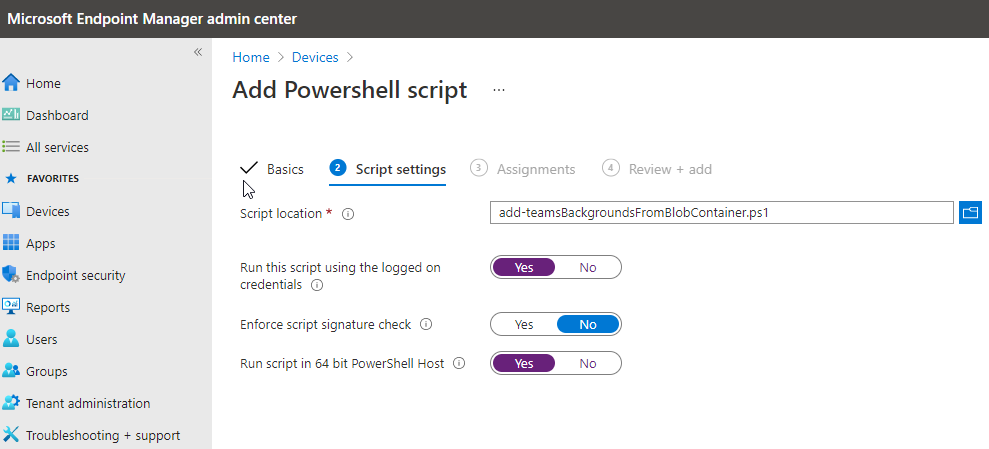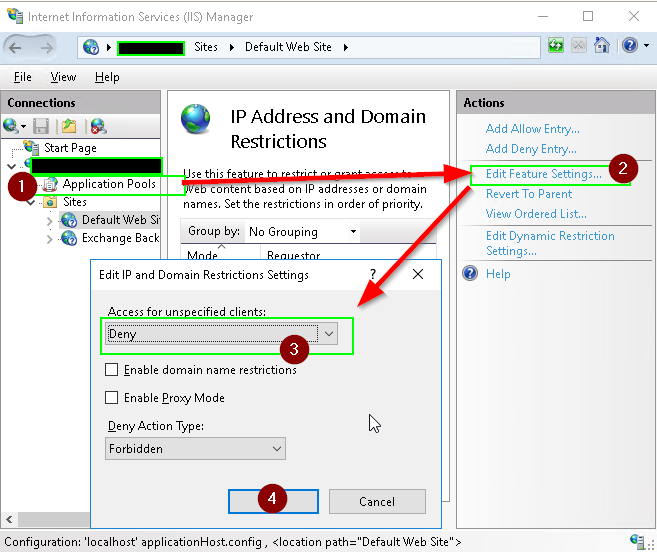Windows 10 Enterprise supports a specific MEM policy to configure the Windows 10 Lock screen for End-users. If you’re unlucky enough to be on a lesser Windows 10 version, you’ll need to trick the OS into thinking the lock screen is modified by the user instead of through a policy.
Here’s a simple ARM template for blob storage and a PS script to deploy through MEM in user context to configure the lock screen of your users:
And the script itself (don’t forget to configure the image URL):
<#
.SYNOPSIS
Sets custom lock screen based on file in an Azure Storage Blob container
See blob template to automatically configure a blob container: https://gitlab.com/Lieben/assortedFunctions/-/blob/master/ARM%20templates/blob%20storage%20with%20container%20for%20Teams%20Backgrounds%20and%20public%20access.json
.NOTES
filename: set-windows10LockScreen.ps1
author: Jos Lieben
blog: www.lieben.nu
created: 13/05/2021
#>
$changedDate = "2021-05-13"
$lockscreenFileURL = "https://tasdsadgsadsad.blob.core.windows.net/teamsbackgrounds/figure-a.jpg" #this is the full URL to the desired lock screen image
Start-Transcript -Path (Join-Path -Path $Env:TEMP -ChildPath "set-windows10LockScreen.log")
$tempFile = (Join-Path $Env:TEMP -ChildPath "img100.jpg")
try{
Write-Output "downloading lock screen file from $lockscreenFileURL"
Invoke-WebRequest -Uri $lockscreenFileURL -UseBasicParsing -Method GET -OutFile $tempFile
Write-Output "file downloaded to $tempFile"
}catch{
Write-Output "Failed to download file, aborting"
Write-Error $_ -ErrorAction SilentlyContinue
Exit
}
[Windows.System.UserProfile.LockScreen,Windows.System.UserProfile,ContentType=WindowsRuntime] | Out-Null
Add-Type -AssemblyName System.Runtime.WindowsRuntime
$asTaskGeneric = ([System.WindowsRuntimeSystemExtensions].GetMethods() | ? { $_.Name -eq 'AsTask' -and $_.GetParameters().Count -eq 1 -and $_.GetParameters()[0].ParameterType.Name -eq 'IAsyncOperation`1' })[0]
Function Await($WinRtTask, $ResultType) {
$asTask = $asTaskGeneric.MakeGenericMethod($ResultType)
$netTask = $asTask.Invoke($null, @($WinRtTask))
$netTask.Wait(-1) | Out-Null
$netTask.Result
}
Function AwaitAction($WinRtAction) {
$asTask = ([System.WindowsRuntimeSystemExtensions].GetMethods() | ? { $_.Name -eq 'AsTask' -and $_.GetParameters().Count -eq 1 -and !$_.IsGenericMethod })[0]
$netTask = $asTask.Invoke($null, @($WinRtAction))
$netTask.Wait(-1) | Out-Null
}
[Windows.Storage.StorageFile,Windows.Storage,ContentType=WindowsRuntime] | Out-Null
try{
$image = Await ([Windows.Storage.StorageFile]::GetFileFromPathAsync($tempFile)) ([Windows.Storage.StorageFile])
Write-Output "Image loaded from $tempFile"
}catch {
Write-Output "Failed to load image from $tempFile"
Write-Error $_ -ErrorAction SilentlyContinue
Exit
}
try{
Write-Output "Setting image as lock screen image"
AwaitAction ([Windows.System.UserProfile.LockScreen]::SetImageFileAsync($image))
Write-Output "$tempFile configured as lock screen image"
Remove-Item -Path $tempFile -Force -Confirm:$False
}catch{
Write-Output "Failed to set lock screen image"
Write-Error $_ -ErrorAction SilentlyContinue
}
Write-Output "Script complete"
Stop-Transcript
Source: https://gitlab.com/Lieben/assortedFunctions/-/blob/master/set-windows10LockScreen.ps1
Deploying in user context:




